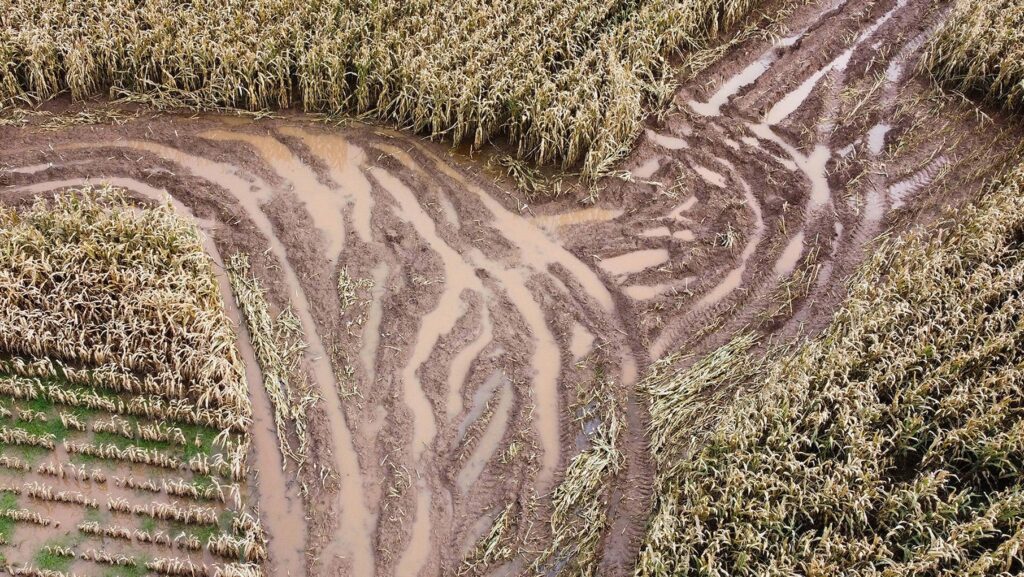6 things to watch out for in wet spring maize campaign
 © ProCam
© ProCam Maize growers should be prepared to address soil compaction and drill later if required after a record-breaking period of rainfall.
The wettest 18-month period across England in recorded history could mean some areas harvest first-cut grass silage before they plant maize, say advisers.
See also: Can living mulch cut maize cost and protect soil health?
Fields earmarked for maize may have been waterlogged for several months.
Simon Montgomery, ProCam’s technical lead, suggests the following tips for this spring:
- Inspection Take the time to grab a spade and dig test pits in a handful of locations in each field. Wait until conditions are right before any cultivations, otherwise compacted soils could become more compacted by machinery.
- Aeration This will remediate anaerobic soil conditions. Incorporating manure will help improve soil structure, and an extra pass of a cultivator may be required for the most compacted ground.
- Nutrient loss Leaching may have depleted nutrient reserves. Test soils to gauge the soil-stock nutrient levels and the plant-available nutrients.
- Delayed drilling If drilling is delayed by more than a week, using a starter fertiliser could help the crop catch up. Growers may also want to investigate varieties that suit a slightly later drilling. The most popular varieties may sell out, though, so plan for this.
- Compacted schedules Contractor and farmer workloads may be condensed and there is a danger that drilling maize could coincide with first-cut grass silage. If this happens, gathering a good first-cut should be a priority.
- Undersowing This can be done with ryegrass or Westerwolds to protect soils at harvest and produce a secondary forage crop is worth considering, particularly if harvesting is pushed back by late drilling. Grass seed can be sown between maize rows when the crop is at the four-to-six leaf stage.
Watch for acidity
Norfolk-based independent agronomist Craig Green of CMG Agronomy says nutrient losses have been huge on some of his client’s farms, caused by intense winter rain.
One north Norfolk farm received almost a year’s rain between September and April and had 885mm over the past 12 months. Average annual rainfall at the nearby Marham weather station is 660mm.
Craig says a lot of land in his area has been depleted of nitrogen, potash and magnesium, so magnesium foliar feeds and granular applications on seed-beds may be needed on some farms.
Some growers are considering magnesium sulphate products to help address shortfalls, he adds.
Lower soil nitrogen supplies mean growers would be well advised to use a starter fertiliser such as diammonium phosphate this year, if muck is not available, he suggests.
He is seeing lighter, sandy land with capped soils, sealing in the moisture, whereas heavier soils have opened up and started cracking in the more recent dry weather.
“What you forget is how much compression rainfall has on the soil. Rainfall is also slightly acidic, and maize doesn’t tend to cope well with acidity,” he says.
Low-rate liming or ploughing may be in vogue this year, as many soil profiles are more acidic than normal in the top 15cm, he adds.
Summing up the outlook for his area, he says: “It’s not all doom and gloom. We actually had 10C temperatures on soils on 5 April, so it is looking like an early season for some growers.
“This will give a chance to get big root systems developed on land that allows an early start.”
